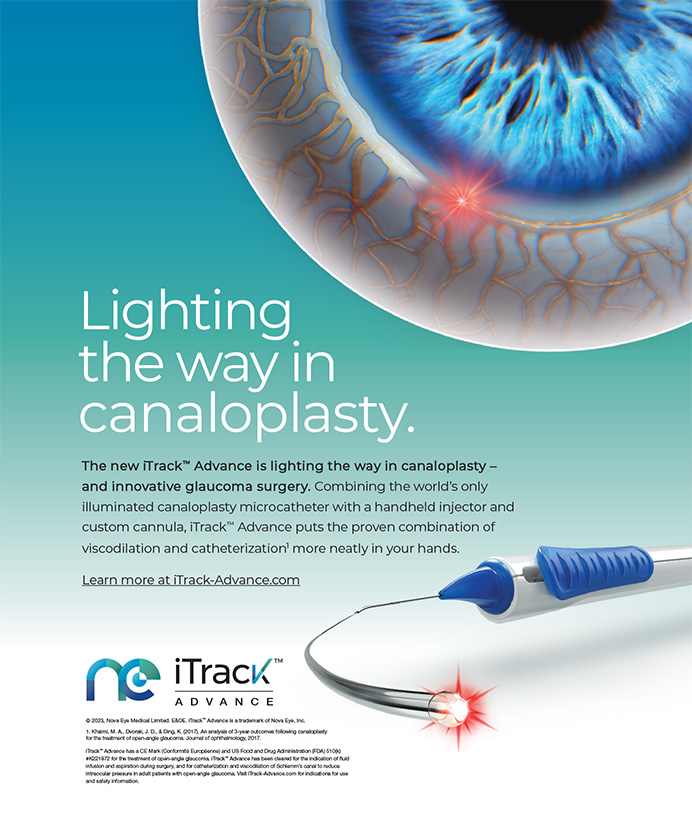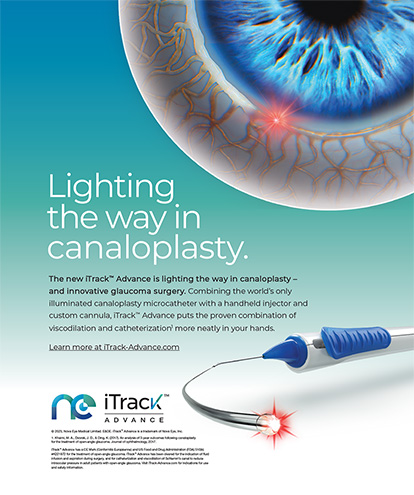Whether it's the Crystalens Accommodating IOL (Eyeonics, Inc., Aliso Viejo, CA), the Acrysof Restor refractive-diffractive IOL (Alcon Laboratories, Inc., Fort Worth, TX), or the Rezoom multifocal IOL (Advanced Medical Optics, Inc., Santa Ana, CA), the focus of cataract and refractive surgery has now shifted to lens implant procedures designed to take presbyopes out of their readers and bifocals and help Medicare recipients enjoy a higher quality of glasses-free living after cataract surgery.
MARKET POTENTIAL
If you look at the shift in demographics pertaining to the number of Baby Boomers and senior citizens who have officially reached the target age for these IOLs, this group now represents the single largest segment of the US population. Therein lies the template for what could easily become the biggest growth spurt cataract and refractive surgeons have seen in more than a decade.
According to David Harmon, Publisher and Editor of Market Scope (St. Louis, MO), these new IOLs are expected to drive double-digit growth as the number of middle-aged people seeking spectacle independence increases. New Medicare reimbursement policies that provide access to these premium IOLs and allow for separate billing will only add to the interest.
GAUGING YOUR READINESS
As surgeons prepare for this double-digit growth, there are a number of major questions and considerations they should ponder:
• How much chair time do these patients demand pre- and postoperatively, and where will I find time in my busy schedule to see them?
• Where will I perform these procedures, what additional staffing and training will I require, and what days of the week best fit my schedule?
• What fees will I charge for these procedures, and will they include an additional procedure to correct postoperative residual astigmatism?
• Should I present refractive IOLs as a two-stage procedure, and if so, when, where, and by whom will the second procedure be performed?
• Who on my staff is properly trained in effectively discussing issues of private pay with both Medicare patients and presbyopes?
• How do I market these lenses (internally/externally) to patients?
CASE STUDY
An entire article could be devoted to effectively answering many of these questions. But, for a brief overview of how to prepare for the projected growth in refractive IOLs, I asked leading eye surgeon, Daniel S. Durrie, MD, how he has prepared his practice in Overland Park, Kansas, to embrace this new lens technology, and what advice he can offer other cataract and refractive surgeons.
Dr. Durrie believes that there are basically four groups of cataract and refractive surgeons today: (1) the purely refractive surgeons who do not currently perform any cataract or lens exchange procedures; (2) the purely cataract surgeons who do not perform laser vision correction, CK, or any other refractive procedures; (3) cataract surgeons with limited refractive surgery experience; and (4) refractive surgeons with limited cataract experience.
“In my opinion, the fourth group of surgeons will probably do the best with the new lens implants,” said Dr. Durrie, “those dedicated to refractive surgery, but who have also performed traditional cataract surgery in the past. Based on their refractive experiences, they're well trained in marketing and well-prepared in patient expectations; they have access to excimer lasers; and they employ experienced refractive counselors and technicians who are well-versed in their field.”
Dr. Durrie points out that to help offset the declining reimbursement rates of the past few years, the cataract-only surgeon has been forced to find ways to increase his volume of cataract patients as well as the number of cataract cases he performs per hour in the surgery center. “This [level of volume] is the exact opposite of what today's refractive IOL patients need. They demand a lot of chair time, a lot of counseling, and a lot of expectation modification. Cataract surgeons may have to give up a significant portion of what they're doing now to make time pre- and postoperatively for these patients,” he says.
CATERING TO PATIENTS
Most cataract surgeons agree that all intraocular procedures should be performed in the sterile and pristine environment of an ASC. In an effort to maintain the same personal level of quality care a patient receives in the practice, surgeons like Dr. Durrie often assign office staff to ensure that the experience the patient enjoyed in the office extends to the ASC. These staffers also telephone patients the day before their procedure, meet them at the surgery center, prepare them for their special day, answer their questions, and make certain that their expectations are met.
Because today's lens-implant patients have higher expectations and are paying a premium for their procedures, industry experts such as Bill Kennedy, Senior Vice President of Business Development for NovaMed, Inc. (Chicago, IL), believe that cataract and lens-implant patients are becoming more discerning and critical of lens procedures not performed in an appropriate or adequate ASC facility. They also feel that many ASCs may need a little extra polish around the edges to help create a patient-friendly atmosphere.
“Today's ASCs need to ensure everything is being done in the best interest of the patient,” Kennedy said. “Surgeons and ASC staff should obviously also offer the highest standard of care, including clean rooms, proper licensure, Medicare certification, professional management, and an overall ambiance that will make each patients' surgical experience a pleasurable one.”
MARKETING
In terms of the internal and external marketing of the new lenses, there are two distinctly different target audiences. One is the 50-year-old presbyope who wants out of his readers and bifocals. The other is the Medicare recipient who wants to upgrade his lens—and vision—after cataract surgery. Regardless of which group you are targeting, it is extremely important to follow the industry's marketing and advertising guidelines.
According to the ASCRS, the same general rules that apply to advertising other medical procedures should also govern physicians' advertising of presbyopia-correcting IOLs. For instance, no claims about expected outcomes, risks, or benefits should be made that are not capable of substantiation through objective, scientific evidence, including bona fide studies. All claims about the procedure should be consistent with the instructions provided in the physician-labeling materials produced by the manufacturer. In addition, physicians should be cautious about using patient testimonials, which may be false and misleading, and in advertising off-label indications. With respect to the latter, surgeons may advertise that they perform the extra-label procedure, but they may not advertise the device that they use for that procedure.
CATCHING THE WAVE
The 50+ age group is ready, willing, and able to pay for these new refractive lens implants. All you've got to do is properly prepare your marketing materials, your staff, yourself, and your ASC to capture the projected double-digit growth. Are you starting to get that warm feeling again?
Michael W. Malley is President and Founder of the Centre for Refractive Marketing (CRM Group), an ophthalmic consulting/advertising agency established in 1988. Mr. Malley may be reached at (713) 839-0202;
mike@refractivemarketing.com.


